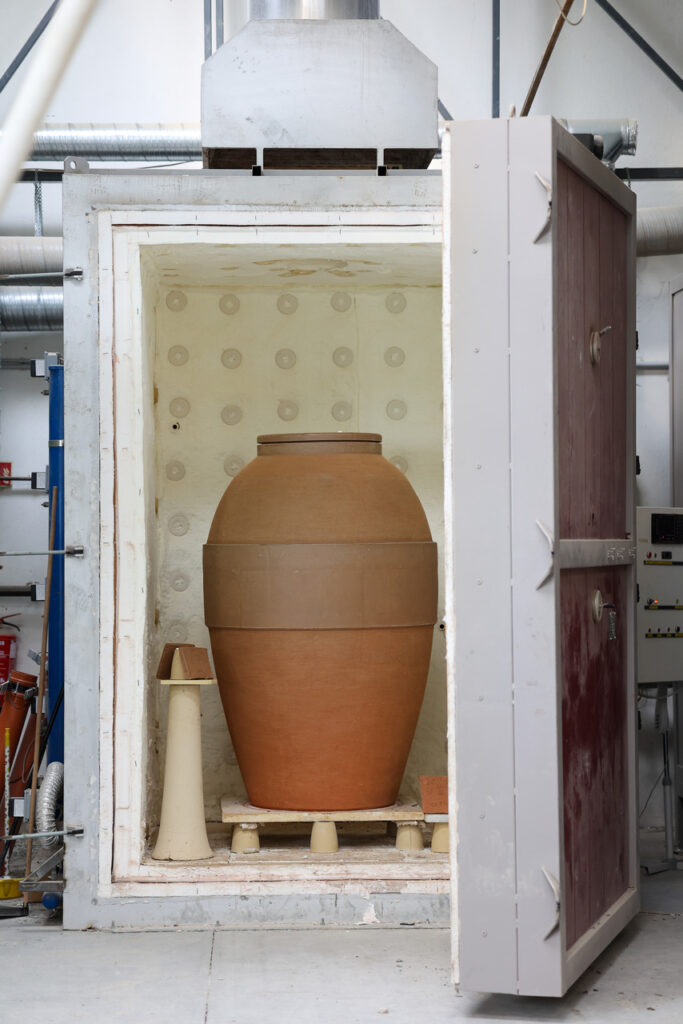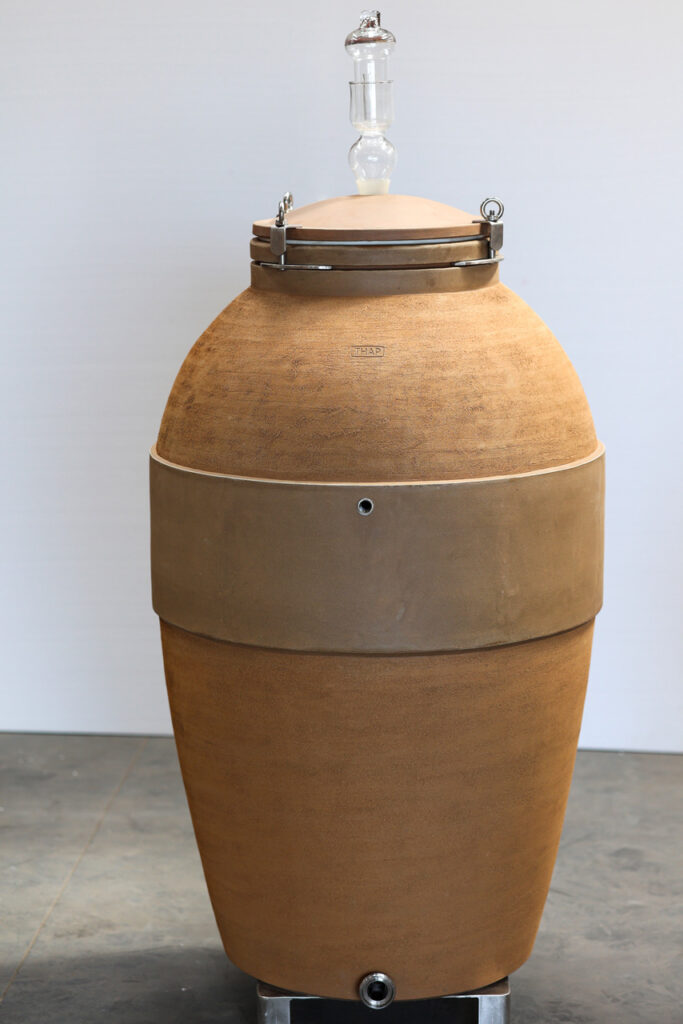The basic material: clay
We take the basic materials for our clay directly from a mine in the mountain region Westerwald (Germany).
We purify and mix the basic materials in the THAP factory to a special composition so the porosity will be consistent and just right. Now we have a piece of raw clay, a pure and living material from the earth.
This piece of clay is formed by craftsmen into an amphora by hand.

The new born amphora has the time to dry gently in the air until it is ready to go into the oven (kiln) to take its final form.
The elements of nature earth, water, air and fire make it possible to create our unique contemporary amphorae which reminds us to the ancient craftsmanship of terracotta pottery in human history.

The technical story
Our terracotta composition has been researched and proved to comply with the requirements for food use: all components are known and controlled.
The porosity of our standard clay composition is around 2,5 % and the pore size <0,4 micron. This porosity provides a moderate level of micro-oxidation. We measure the porosity of each amphora during production to make sure it is consistent and right.
The fineness of the pores in our amphorae limits the development of micro organisms in the material and makes it easy to clean. Even red wine is not really staining the interior of the terracotta products so they can be used alternating for making red and white wine.
Take into consideration that the inner surface of the amphora is quite rough and this plays also a role in the development of the wine.
The finished vessels are filled with a solution of water and tartaric acid to check their integrity. If everything is ok, we let them dry and pack them well for their final destination.
Our amphorae are made to last a long time and require few maintenance.
Basic rules for the use of the terracotta products
- Control the packaging as soon as the product is unloaded by the carrier (amphorae are assured during transport and delivery). If there is any damage, please notify us as soon as possible so we can find a solution.
- If you move the product, please make sure to use the packaging material: it is helpful to absorb possible shocks that could compromise the integrity of the product.
- Put the product in its designed location and place it on a regular flat surface to avoid damage to the bottom. Leave it empty for 1 day, then fill it with water only. We always test the product with a solution of water and tartaric acid before we send it, but you have to make sure the product works well. Avoid moving filled vessels because the risk of damage is greater.
- 2 days after the water filling, check the product thoroughly. If there are any leaks, please notify us as soon as possible so we can find a solution.
- During fermentation, the amphora can be used without lid or with lid with an airlock. Do not over-tighten the screws of the lid, use average strenght to tighten the screws.
- In order to avoid an air bubble inside the cap, the airlock on top of the lid must be inserted after the amphora’s complete filling. Close the amphora with the lid, complete the filling through the hole of the lid if necessary. Insert the airlock and finish the filling untill half of the airlock is filled with wine or other liquid.
- High pressure washer using hot water with a temperature 60-65 °C ensures a good cleaning. Build up the temperature change in a few steps.
- The use of ozone and UV rays also guarantee optimal microbiological hygiene.
- Fill the amphora with water and add 2-4 g/liter of potassium metabisulphite and leave it for at least 6-8 hours; wash out well afterwards with lots of water. Fill the amphora with a solution of water and 5-10 grams/liter of citric acid and leave it again working for at least 6-8 hours; wash out again afterwards with lots of water.
- Non-aggressive acid and basic detergents can be used also. Our products can be cleaned easily, in a simpler way than wooden barriques. You can use our tilting rack to make it much easier.
- A quick method: use sodium bicarbonate (1 part) and citric acid (2 parts). The powders should be mixed dry and add water to a concentration of 10 %. Apply with a sprayer, leave for 30 minutes, brush and rinse well with lots of water.
- We advice against using high temperature of our terracotta products in combination with metallic elements. Be careful around stainless steel because stainless steel has a different expansion coefficient than ceramic.
- When the terracotta product won’t be used for a long time, clean it as suggested above and leave it to dry completely. Leave the amphora open, with open lid and valve.
